Happy Sunday! The Animation Obsessive newsletter returns — with an issue that isn’t like any we’ve done before.
Last month, the indie animator Mark Neeley contacted us about publishing an article in our newsletter. His idea for the piece intrigued us. So, today, we present the first-ever lead story by a guest author in the history of Animation Obsessive:
1️⃣ The Beach Boys Cartoon Show (by Mark Neeley).
2️⃣ Animation news around the world.
With that, let’s get into Mark’s story!
1: A Beach Boys enigma
A few years ago, I stumbled upon an animation mystery. Was a Beach Boys animated series really planned in 1970?
This story begins with a Heritage Auctions lot that sold in 2013. Included was a set of six pieces of production art for a supposed series, tentatively titled Beach Boys Cartoon Show and dated to 1970. Being an obsessive fan of the band, as well as an animator myself who’s highly influenced by this era of animation, this case refused to leave my brain.
While The Beatles (who the Beach Boys were very much in competition with in the mid-sixties) had their own Saturday morning cartoon, the art for this Beach Boys series clearly references 1968’s groundbreaking psychedelic film Yellow Submarine.
That animated feature’s production staff included a wealth of animation talent, such as director George Dunning of UPA and the National Film Board of Canada. The Czech-German artist Heinz Edelmann contributed the overall design, like the iconic tall, lanky character silhouettes. You can definitely see that influence in the Beach Boys Cartoon Show, and the designs look incredible.
I’ve read nearly every biography about the Beach Boys, but I had never seen this failed cartoon mentioned anywhere before. I knew it was my duty to crack the case. Most importantly, I wanted to find out: was a pilot ever actually filmed?
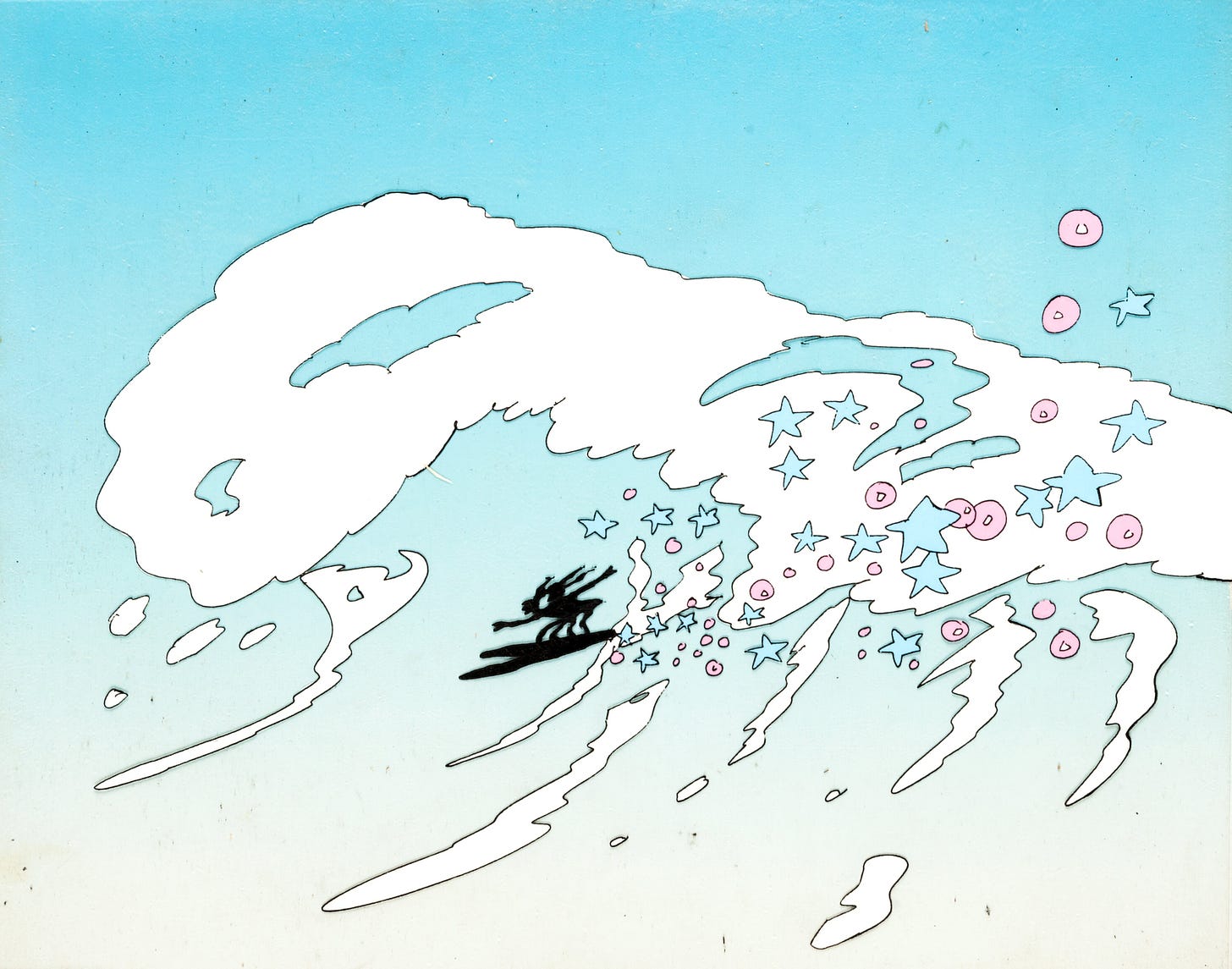
I began to scour digital archives for any possible newspaper clipping, or for relevant anecdotes published in print or hiding in the depths of the internet. When researching something over 50 years old, the unfortunate reality sets in that many people involved have since passed away, or are virtually impossible to track down.
Per the auction description, the artwork was created by Fred Crippen and his Pantomime Pictures studio (and stored in a folder from the Beach Boys’ own record label). Originally a print illustrator, Crippen had been influenced by John Hubley’s UPA film Rooty Toot Toot from 1951.1 Later in the ‘50s, during a freewheeling, laissez-faire period when UPA hired a host of outside designers and illustrators, Crippen himself wound up at the studio.
In 1959, he founded Pantomime on the West Coast. Like many independently minded animators of the era, Crippen and his small unit worked with ad agencies to produce commercials. His fingerprints are all over animated TV ads from the ‘60s, as well as classic short vignettes from Sesame Street (I for Impolite), The Electric Company and others.
Following Crippen’s career timeline, I realized that, to have worked on a Beach Boys project in 1970, it would’ve been right after the conclusion of Roger Ramjet (1965–1969), his most well-known work. That superhero parody series is a master class in cleverly limited animation. Crippen’s fellow iconoclast animator Bob Kurtz was part of the team that produced it. Still operating his Kurtz & Friends studio today, he was the first person I knew I had to reach out to.
Unfortunately, he had never heard of the Beach Boys project.
Kurtz’s response established a pattern of dead ends as I kept looking for potential contacts. Authors and animation historians Jerry Beck and Amid Amidi didn’t have any information on the subject. I tried J. J. Sedelmaier, an encyclopedic archivist of this era’s animation. Same result. On the other end of the spectrum, I drew blanks reaching out to the writers and historians who’ve spent decades archiving the history of the Beach Boys.
The total lack of new leads might have signaled me to quit this mystery, but I was able to dig up a couple of interesting details on my own.
The 1970 timeframe listed on Heritage Auctions checked out. You can match the character sketches to the photographs from the Beach Boys’ Sunflower album that year: the conductor’s hat, top hat, bandana, etc.
Meanwhile, the auction description claims that there was an educational slant to the show, involving raising awareness of ecology and water pollution (hence a cel with an “oil monster” attacking some surfers). This matches the lyrical themes that the band experimented with during this period, in particular with songs such as Don’t Go Near the Water.
Through online crowdsourcing, I made more breakthroughs. A collective research effort ensued after I posted the mysterious Crippen artwork in social media groups dedicated to the history of animation, television and film in general. Aaron Crippen (Fred’s son, who worked for him for several years) even replied, briefly noting that he remembers the project and meeting with a few band members and their legal team.
Per Crippen, “I believe there may be additional artwork around. I don’t recall a pilot, though I remember some meetings with lawyers, Mike Love, etc.” However, further attempts to contact him proved unfruitful.
Additional proof of the series’ existence and direction was a brief clipping that appeared in multiple newspapers around the country in July of 1971. The following is from the July 31 edition of North Carolina’s Charlotte News:
The biggest discovery was an interview with the radio station WPLJ-FM (New York) in February of ‘71.2 It was five months prior to the newspaper clipping. Carl Wilson and Mike Love chime in, but Bruce Johnston takes the lead on the topic of the animated show:
Johnston: We’re getting into a cartoon series, too, that this company, Pantomime Pictures… what is it, Jack? Pantomime Productions?3 They have a couple of series on the air, and this is a… this isn’t like a Beatles series. Remember that Beatles thing that was on the air? […] Well, it ain’t like that. It’s really… the drawings are so beautiful. A little reminiscent of Yellow Submarine. You know, and with a lot of ecology and a lot of good music, hopefully, in it. And some nice health food things, and just a lot of things.
Interviewer: But it’s gonna be aimed at kids, right?
Johnston: Yeah, aimed at kids, and adults will probably like it too.
Shortly after this, Johnston revealed that the band would also voice the characters:
Interviewer: That’s gonna take a helluva lot of time, isn’t it?
Johnston: Well, it’ll take a good amount of time, but not the way it usually is done... it’s something that…
Interviewer: I always wonder what comes first, the chicken or the egg. Do you first read the scripts, and then they time the animation?
Johnston: Jack said we’re gonna do the voices first, I guess.
Interviewer: Right… and then they time the animation around that.
And just like that: a detailed acknowledgement from the band, as well as another confirmation of the educational theme of the show. The Beach Boys Cartoon Show was real.
After that, my research efforts seemed to stall. But, every so often, my post would get rediscovered and shared by newcomers. When it was randomly reshared a year ago, Aaron Crippen again responded, this time with a truly perplexing comment. He claimed that the set of production artwork on Heritage was actually for another project entirely: for a band called “Insect Surfers.”
At first, I shrugged off this bizarre suggestion. Quick research found that Insect Surfers is a D.C. surf rock band that formed in 1979. If Crippen had created artwork for them, how would it have ended up in the same folder as the Beach Boys art?
Furthermore, the “oil monster” cel matches the ecology theme that we know the show tackled. And why would art for Insect Surfers be done on cel, which is exclusively for animation? It wouldn’t make sense for a cartoon series to be made for a relatively obscure surf rock band.
However, I nearly fell out of my chair when I saw the Insect Surfers logo. It was indeed a near replica of the cel from the production artwork, and it was used on several of the band’s covers.
Puzzled and now questioning the entire project, I reached out to Insect Surfers directly via their official website. I told them about my research and showed them the supposed “Beach Boys” cel, asking what the origin of their group’s logo was. The band’s David Arnson got back to me, claiming to have never heard of the Beach Boys project.
Arnson explained that the band’s manager had the idea of recreating the poster for The Endless Summer (1966), a surf documentary film. Designed by John Van Hamersveld, the poster features black silhouettes of two surfers carrying a surfboard overhead, a beach sunrise in the foreground.
“So what you are seeing is actually us appropriating a famous surf movie poster designer,” Arnson wrote. Given the color scheme and overall design, it’s clear that that was what Crippen was going for as well.

It seems incredibly unlikely that Insect Surfers would have seen any of Crippen’s Beach Boys artwork. The band started nearly a decade after the cartoon was abandoned, and the public didn’t see this art until almost 45 years later. Still, the resemblances are, frankly, uncanny.
There’s also the mystery of Aaron Crippen’s comment. Two years after writing that he remembered the Beach Boys show, why did he change his tune and claim the artwork was actually for Insect Surfers?
Is it possible that the mixup stemmed from a labeling mistake? Could Insect Surfers artwork have ended up in the Beach Boys folder, given the similarities of the two? It’s plausible, but there are still a couple of things that don’t add up. When I presented my research to Arnson, he seemingly had no knowledge of any animation projects, and simply told me about the logo’s connection to the Endless Summer poster. And there’s the fact that the oil spill cel (which features the surfing “insect” characters) is a perfect match with the established ecology theme of the Beach Boys show.
All we know for sure is that the Beach Boys Cartoon Show was slated to air in the fall of 1971. The Beach Boys were to record their own voices, and they confirmed the series’ educational theme of ecology and environmental (and health) awareness. The project was far enough along that it found its way into the press. And we have a signed and labeled sketch of the cast by Fred Crippen.
As time went on and I tried to learn more, my research stalled once again. In reality, the reason is probably anticlimactic. The sea of failed pilots is vast and endless. Were the Beach Boys ultimately dissatisfied with the overall direction and didn’t give a green light? Was it Crippen’s choice to not move forward? It seems unlikely that we’ll ever have full closure on the mystery of this project.
Or maybe, against the odds, footage will emerge one day of oil spill monsters colliding into surfing bugs — with the Beach Boys and their good vibrations there to save the day. MN
Mark Neeley is an animator and designer from Cincinnati, Ohio. Short films and music videos are the focus of his hand-drawn, analogue animation. As a journalist, he is also a contributing writer for the music and arts publication Aquarium Drunkard.
2: Newsbits
In America, VFX staffers at Marvel Studios have moved to unionize — big news for the VFX business, which remains chiefly non-union.
A Blu-ray version of the Czech classic The Pied Piper (1986) is out via Deaf Crocodile, a boutique distributor. The film has never looked better.
In Japan, director Sunao Katabuchi (In This Corner of the World) will reveal the pilot for his next feature, The Mourning Children, at KyoMAF in September.
Ireland’s Cartoon Saloon took its film Puffin Rock and the New Friends to British theaters this week. The Times calls it “a gorgeous mood piece that displays immense sensitivity”; director Jeremy Purcell talked about its creation.
In Nigeria, Technext has an interesting profile on Shofela Coker, who directed the third episode of the Kizazi Moto anthology and did the animation for Liyana (2017).
The new Teenage Mutant Ninja Turtles movie has pulled in over $72 million in America and around $22 million abroad.
In Mexico, the 2023 Pixelatl animation festival happens in September. Check out its very fun promo animation by director Silvia Prietov (Cartoon Brew interviewed her about it).
The Japanese film Manual of Ninja Martial Arts (Ninja Bugei-chou, 1967) has been released on YouTube with English subtitles. (Thanks to Rosemary Travale for the tip.)
In America, the theatrical release of The Inventor has been delayed to September. We recently had the chance to see the film ourselves — lots of really stunning stop-motion design and animation, and similarly impressive 2D sequences.
In Argentina, the Ventana Sur film market has an open call for short-form animated projects from Latin America with fantastical or horror themes. The deadline is August 29.
Lastly, we wrote about the art direction of Cartoon Saloon’s Song of the Sea.
According to Cartoon Brew, Crippen saw Rooty Toot Toot in 1952 and was hooked. “It was a real departure from what animation had been doing, in style of animation, the design of the thing, it was really influenced by contemporary art,” Crippen remembered. “Because Disney and Warner Bros. and everybody weren’t doing much.”
First discovered via a written transcript posted on The Smiley Smile Message Board, later found in full.
Question likely directed at Jack Rieley, who was the band’s manager at the time.



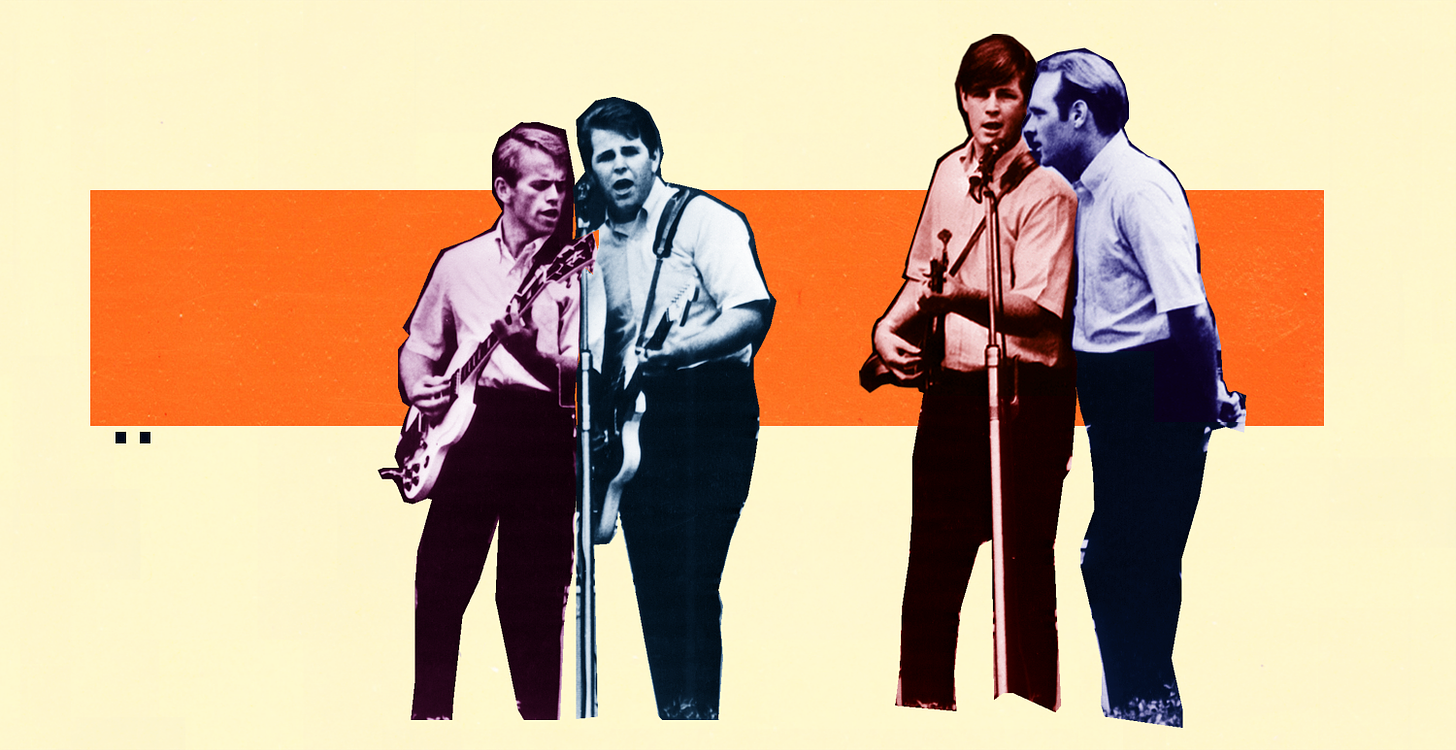
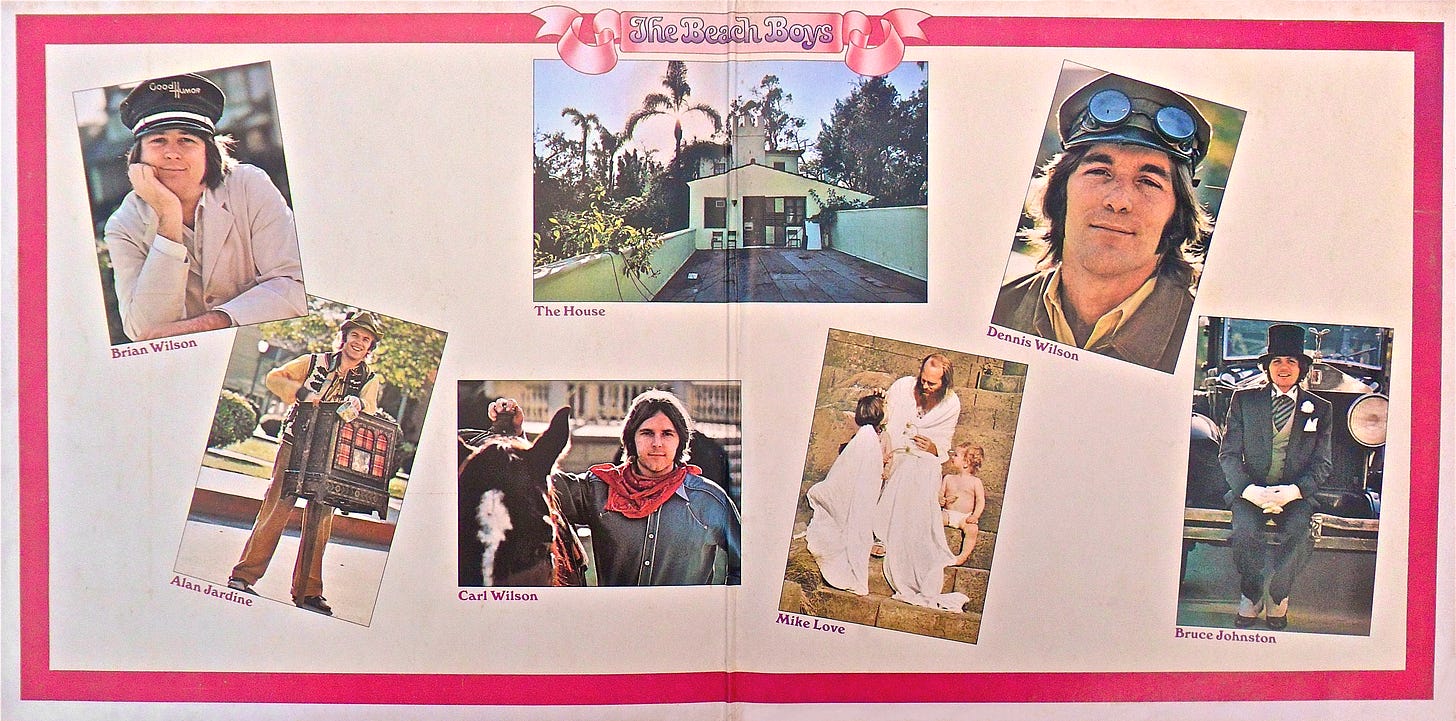


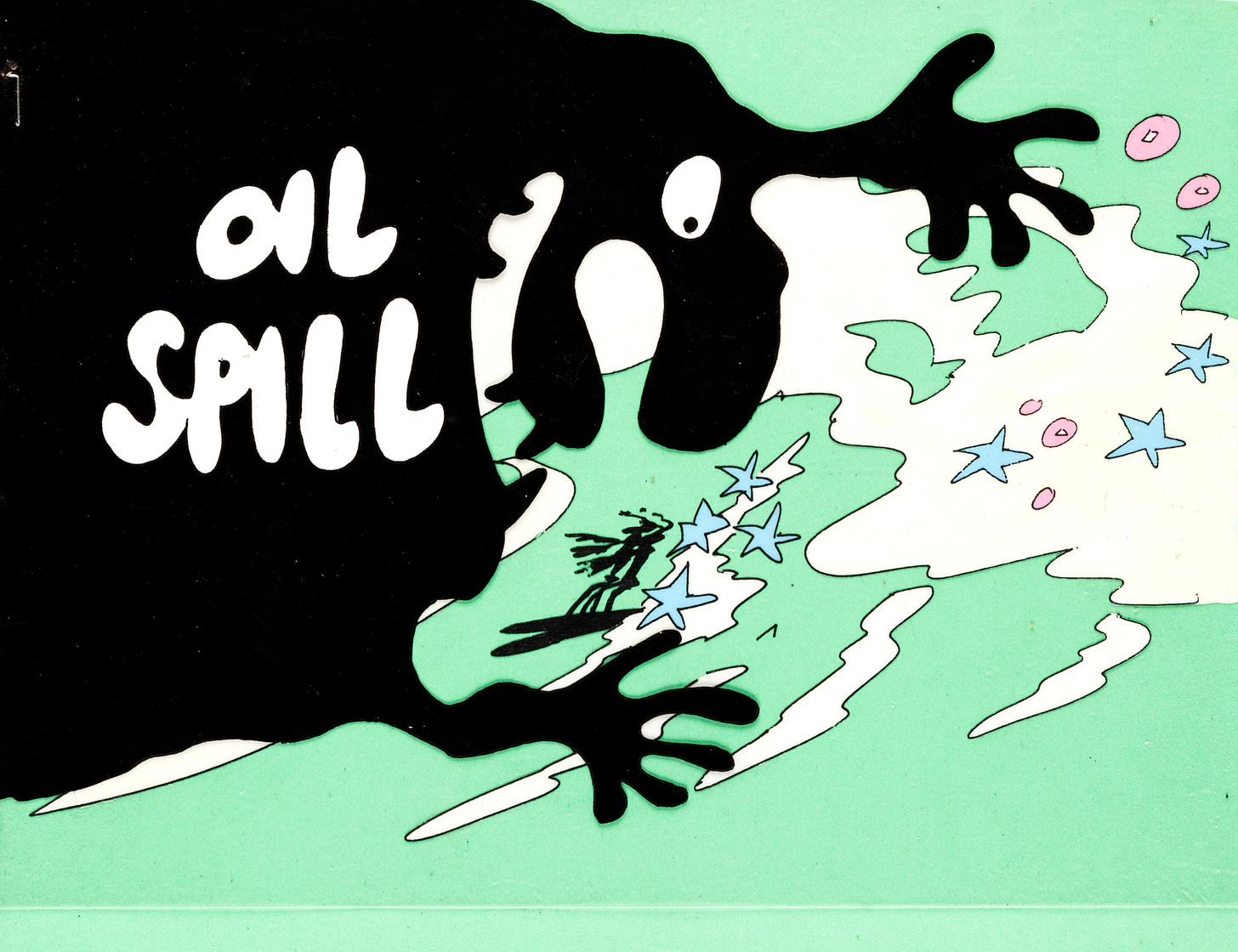

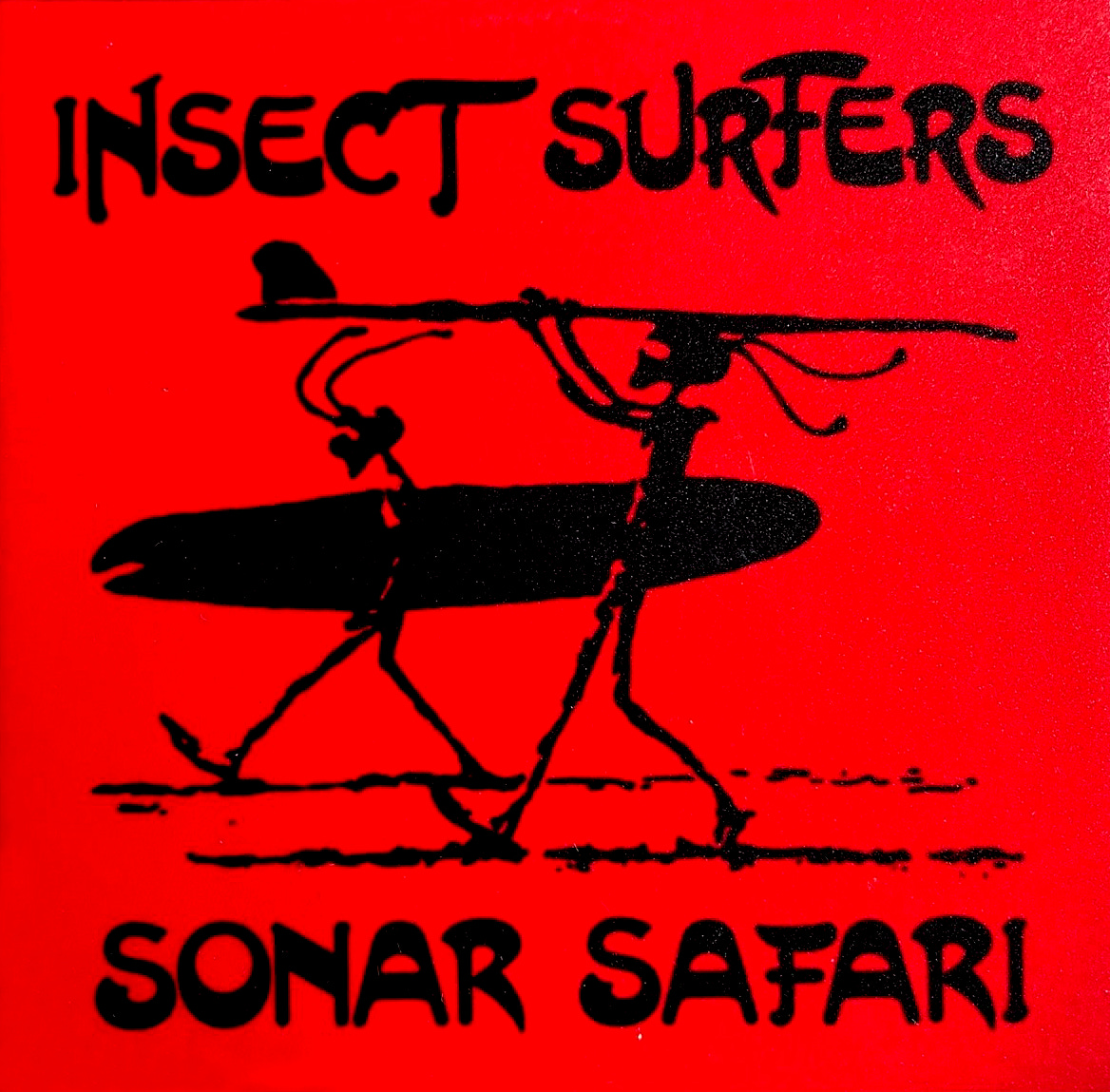
Dude I am also an animator madly obsessed with the Beach Boys (including making my own Smile mix) so this was a joy for me to read. I never knew about this cartoon and, like too many Beach Boys efforts at that time, wish it had come to light! I think I knew about the Hannah Barbera one that was proposed in the late 60s; but apparently there's also concept art for a special in the late 70s where they're anthropomorphic animals, and some lost Nickelodeon shorts from the 90s
What a fascinating read into what might have been.